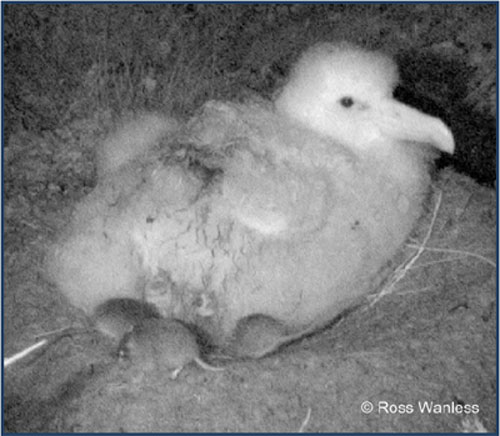An international team of nine marine ornithologists, island conservation managers and rope-access technicians (and ACAP's Information Officer) leaves Cape Town this afternoon on the South African Antarctic supply ship, the S.A. Agulhas, for Gough Island in the South Atlantic.
Gough Island falls under the administration of Tristan da Cunha, itself part of the United Kingdom Overseas Territory of St Helena, Ascension and Tristan da Cunha. Along with Inaccessible Island in the Tristan Group it forms one of the few UK natural World Heritage Sites. It is also a RAMSAR Wetland of International Importance and a Tristan Nature Reserve. Gough supports large seabird populations, including of five ACAP-listed species, of which two, the Tristan Albatross Diomedea dabbenena and the Atlantic Yellow-nosed Albatross Thalassarche chlororhynchos, are endemic to the Tristan Group.
It has become well-known that the seabirds of Gough, especially the Critically Endangered Tristan Albatross, are threatened with extinction from attacks by introduced House Mice Mus musculus. In all years studied in the last decade, the breeding success of these albatrosses has been far lower than can sustain the population, due to the high numbers of chicks killed by mice in the post-brood winter period.

The expedition, as in recent years, is being organized jointly by the UK's Royal Society for the Protection of Birds (RSPB) and the FitzPatrick Institute of the University of Cape Town, with logistic support from the South African National Antarctic Programme (SANAP) of the Department of Environment Affairs. The research is largely funded by the United Kingdom Government's Overseas Territories Environment Programme (OTEP) and Darwin Initiative and, this year for the first time, by the Royal Naval Bird Watching Society. The expedition will work closely with seconded staff from the Tristan Conservation Department, two of whom will join the expedition when the ship calls at Tristan before reaching Gough.
Research activities on ACAP species will include continuing demographic monitoring of Tristan and Atlantic Yellow-nosed Albatrosses, commencing a new demographic study of the Southern Giant Petrel Macronectes giganteus (Gough is its most northerly breeding locality) and continued monitoring of breeding success of Grey Petrels Procellaria cinerea, as well as of other species of burrowing petrels and the Northern Rockhopper Penguin Eudyptes moseleyi.
In addition to the above ornithological research, two island management experts from New Zealand have joined the team to commence the writing of the required operational plan for the eradication of Gough's "killer mice" (click here for the eradication feasibility study and related studies). Alien plant eradication work will also continue on the coastal cliffs.
It is intended to write and post news stories from Gough Island highlighting different aspects of the expedition's work on ACAP species, and the people involved, once we are all ashore in about a week's time.
John Cooper, ACAP Information Officer, 2 September 2010

 English
English  Français
Français  Español
Español